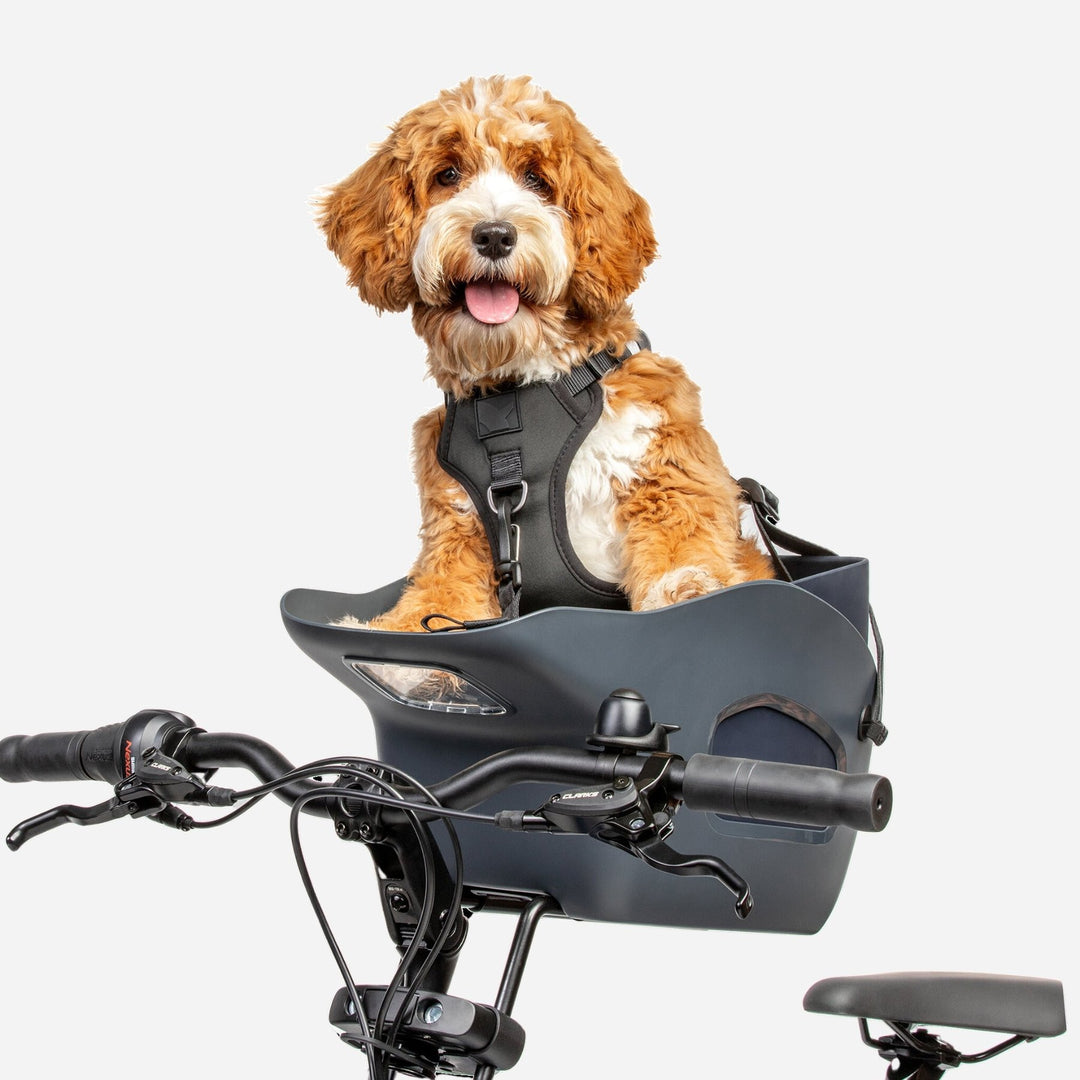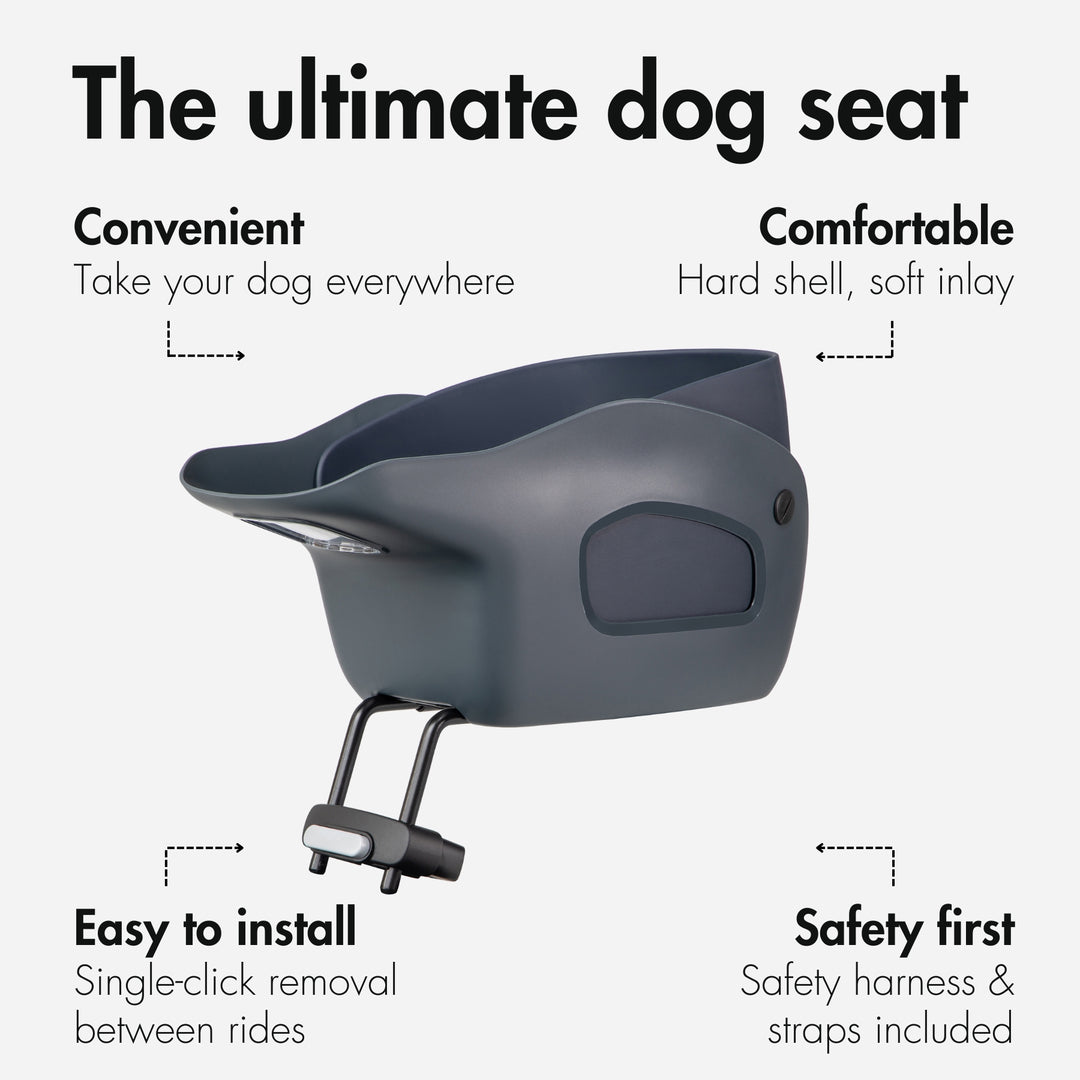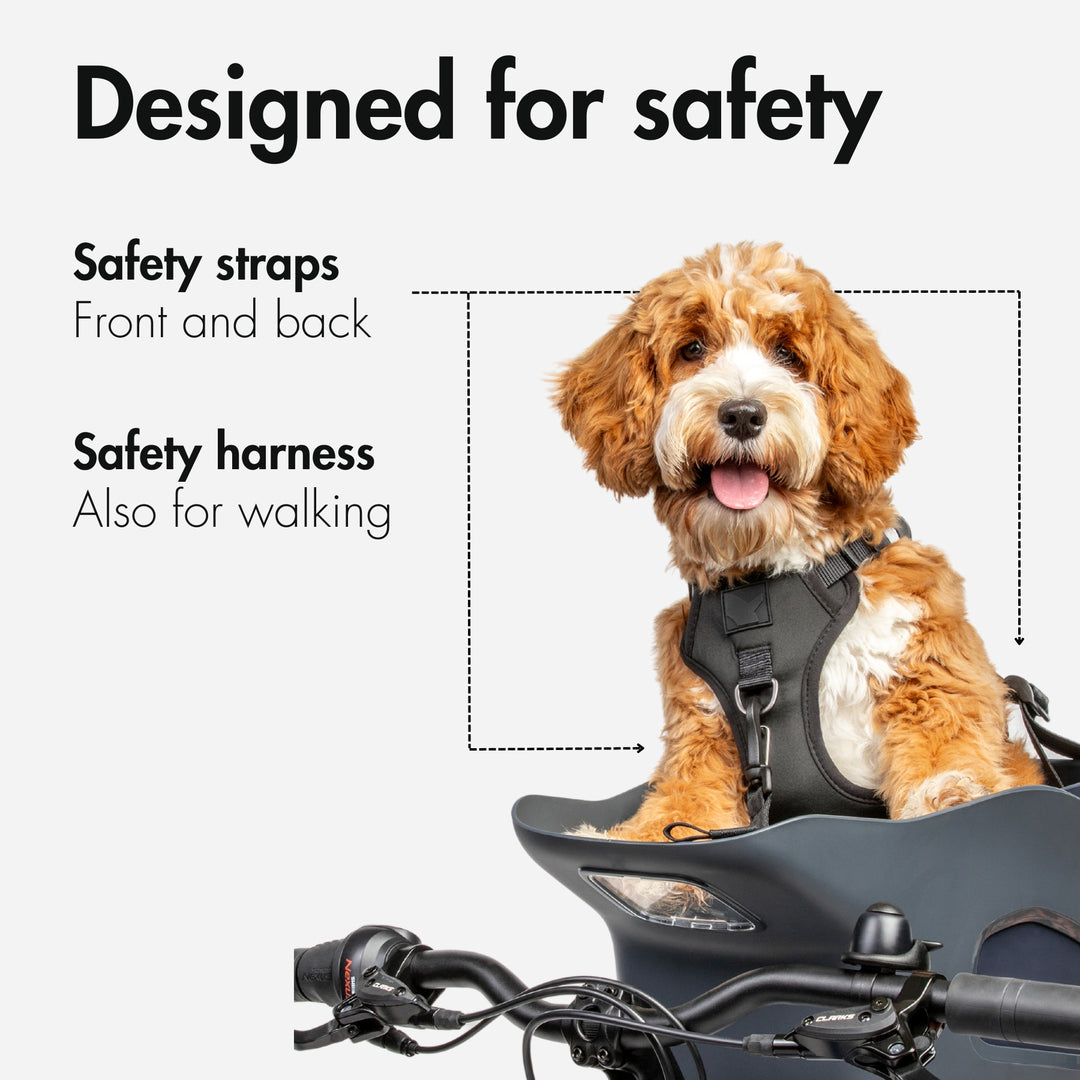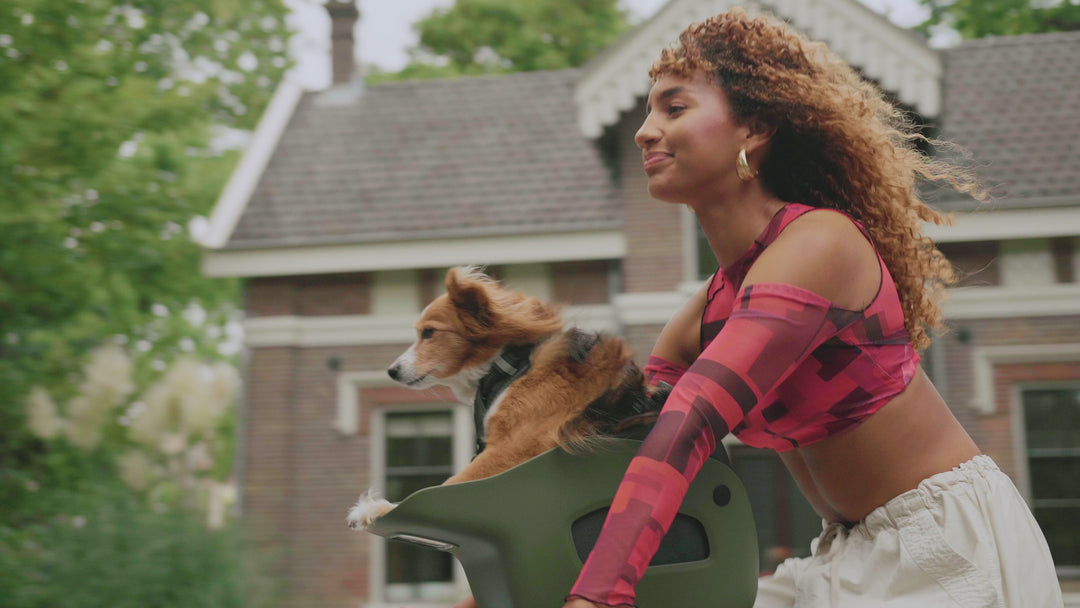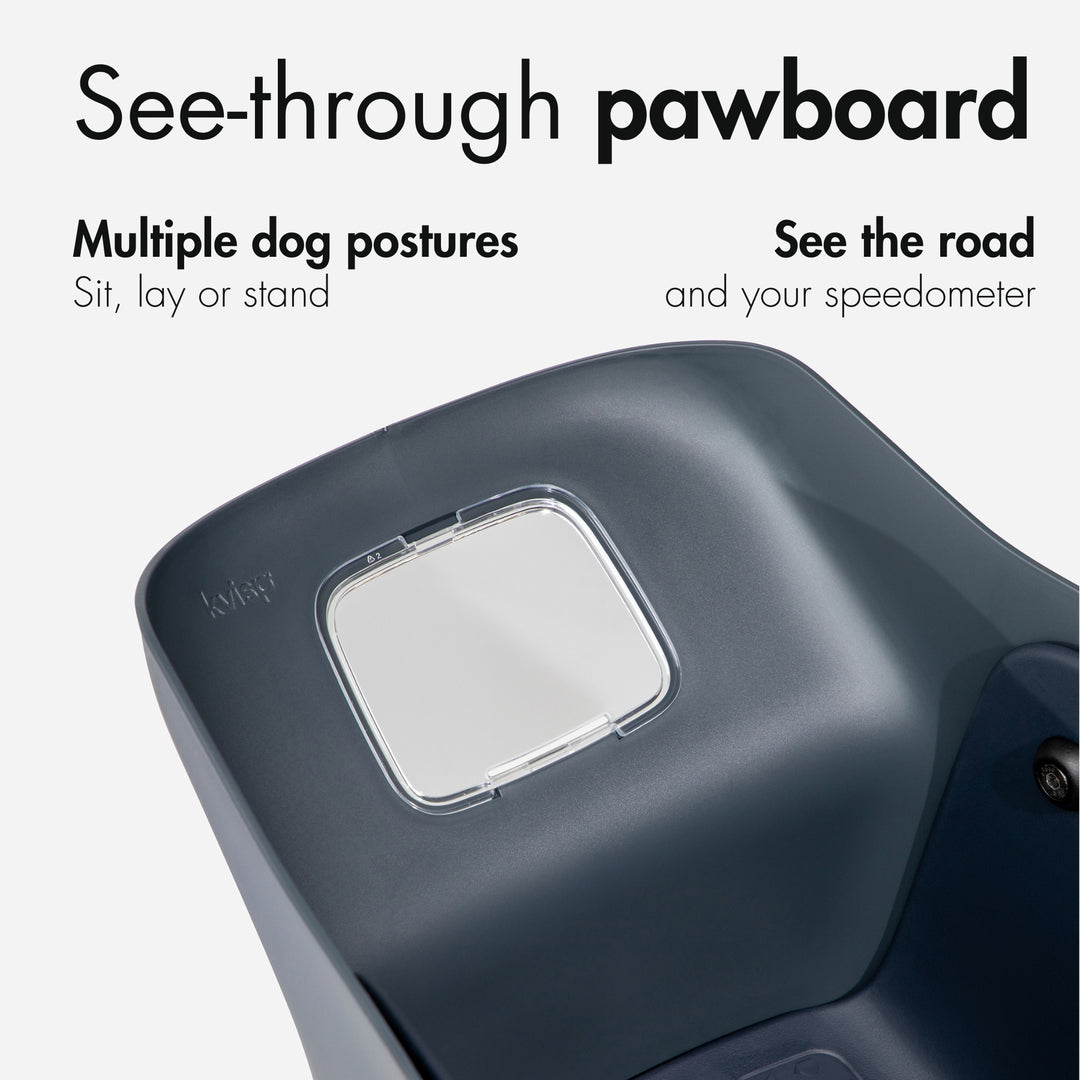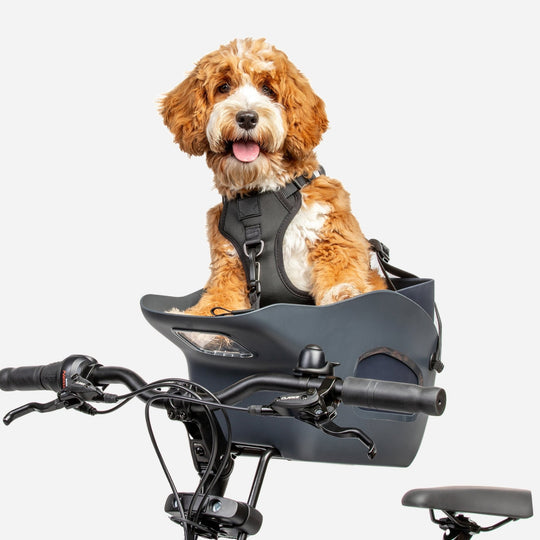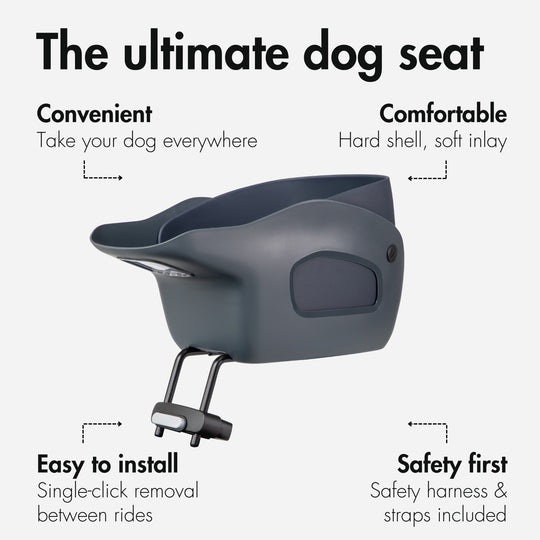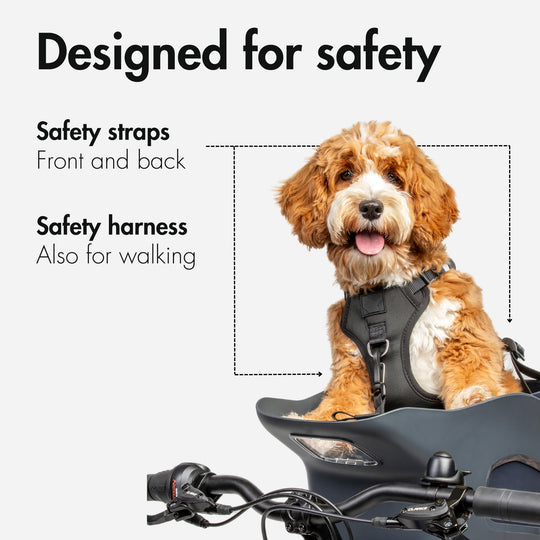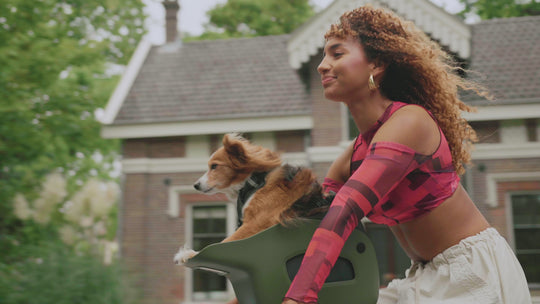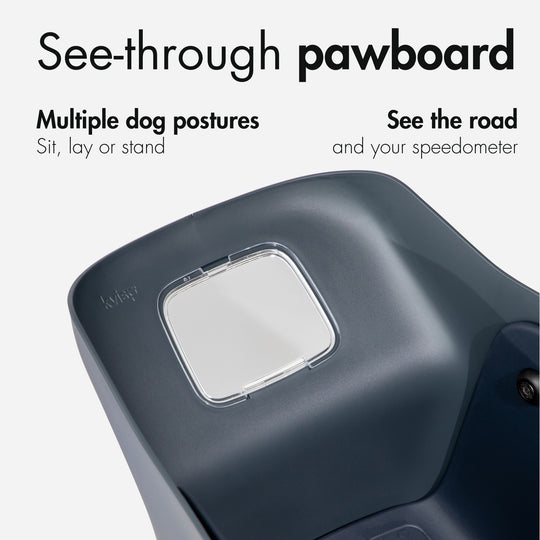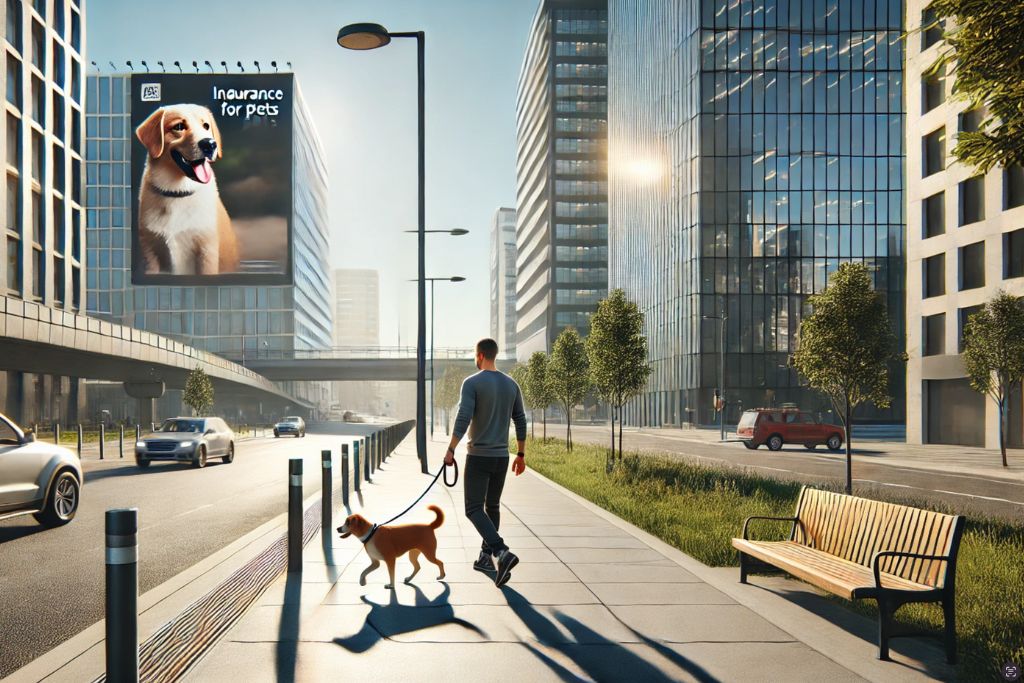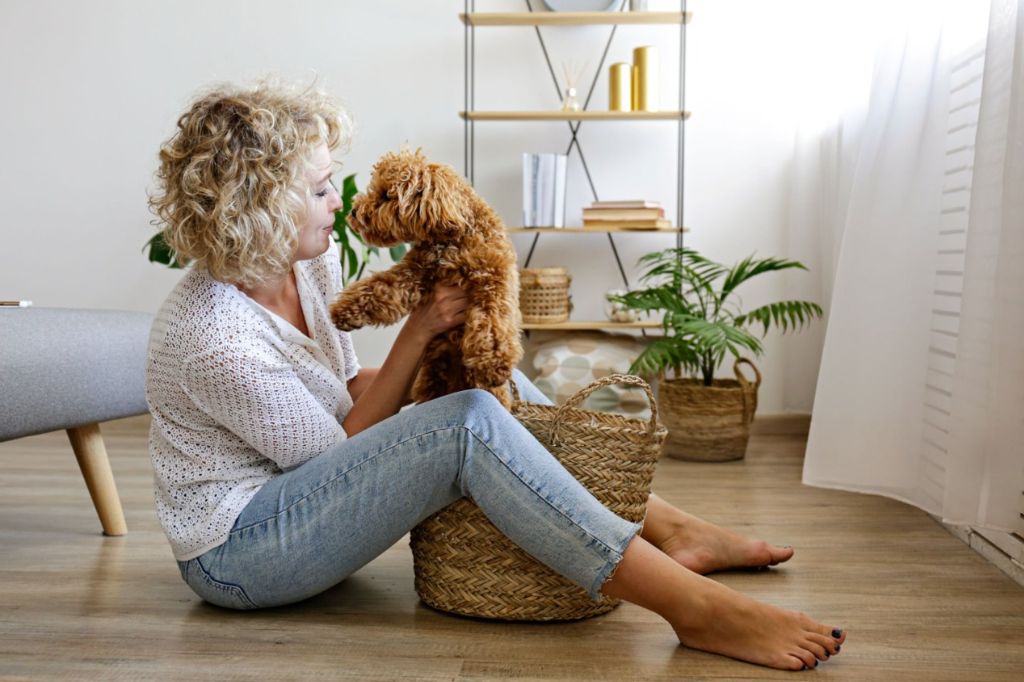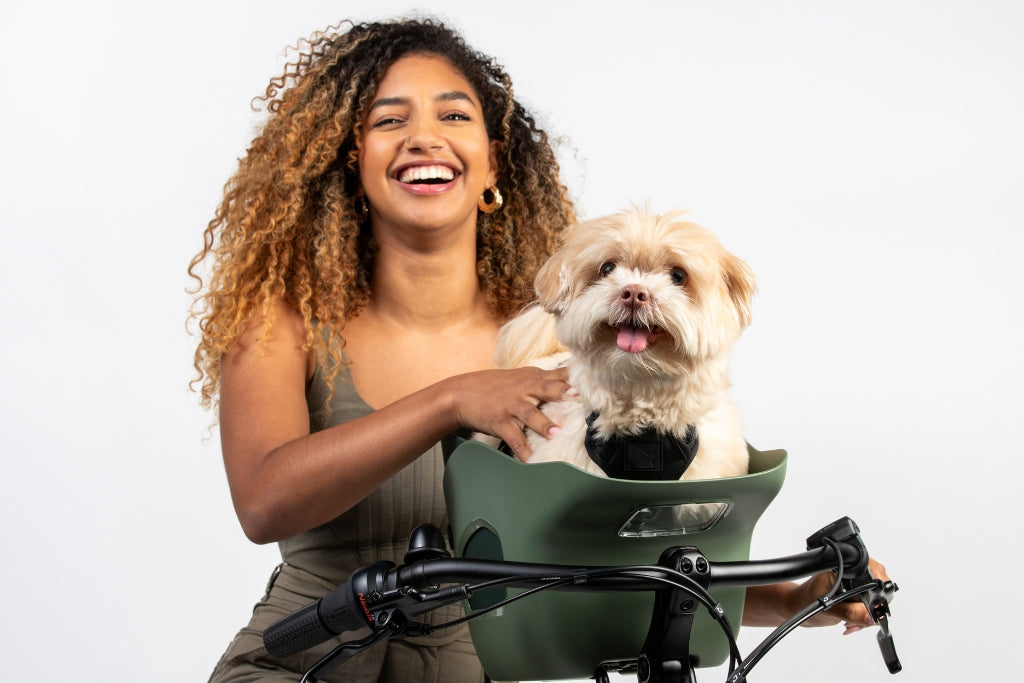Cycling with Your Dog: Safety Tips for Beginners
Ever looked at your bike and then at your dog, wishing there was a way to bring them along for the ride? You’re not alone! Many pet owners struggle with the idea of leaving their pup behind when heading out for a cycling session. The good news? You don’t have to. With the right setup, biking with your dog can be an exciting, safe, and enriching experience for both of you. Whether your pup loves to run alongside or prefers a cozy small dog bicycle carrier, there’s a way to make it work.

Beyond the thrill of the ride, cycling with your dog is a great bonding experience. It keeps them physically active, mentally stimulated, and lets them explore the world in a way they wouldn’t on a regular walk. Plus, it’s an amazing way to incorporate them into your daily routine—why leave your furry friend at home when they can be part of your next outdoor adventure? If you’re just starting out, don’t worry! This guide will walk you through everything—from safety tips and training to choosing the best dog carriers on bikes—so you and your pup can hit the road with confidence.
Choosing the Right Setup for Your Dog
Before you hit the road, it’s essential to figure out the best way to bring your dog along on your bike. Not all pups will be comfortable running alongside you, and some may not have the endurance for long distances. That’s where dog carriers on bikes come in handy. There are several options to choose from:
-
Bike Leash Attachments – These allow your dog to run beside your bike safely, but they require a well-trained dog with good stamina.
-
Dog Trailers – Great for medium-to-large dogs who aren’t comfortable running long distances. They attach to the back of the bike, giving your pup a secure place to sit while you pedal.
-
Dog Bike Baskets & Seats – Perfect for small dogs! A small dog bicycle carrier lets your pup enjoy the ride without needing to run. If you have an e bike with a dog seat, you can go on longer rides with less effort while keeping your dog comfy.
When choosing the best setup, consider your dog's size, temperament, and energy level. A high-energy dog might prefer running beside you, while a small or older dog may feel more comfortable in a carrier. Whatever you choose, safety should always come first—make sure the carrier is secure, well-ventilated, and comfortable for your pup. If you’re eyeing to get the Kvisp dog bike carrier but still unsure if your dog will fit, check out our "Will My Dog Fit?" guide.
Preparing Your Dog for the Ride
If your dog has never been near a moving bicycle before, jumping straight into a ride can be overwhelming. The key to success is slow and steady familiarization. Start by letting your dog inspect the bike while it’s stationary—let them sniff, sit near it, and get comfortable around it. Once they seem at ease, walk the bike alongside them at a slow pace, rewarding them for staying calm. After a few sessions, try taking short, slow rides in a quiet, controlled environment before progressing to busier paths.
Basic obedience training is also non-negotiable. Commands like “stop,” “slow,” and “leave it” can prevent accidents and keep your dog under control if they get distracted. If your pup tends to get overly excited, a structured training approach will help reinforce good behavior. Assess their comfort level before every ride—if they seem hesitant, go back a step. Not every dog will immediately love cycling, but with patience and encouragement, most will learn to enjoy it!
Essential Safety Gear for You and Your Dog
Safety should always be a top priority—both for you and your pup. Just as you wouldn’t ride without a helmet, your dog needs protective gear too. If you’re using a dog carrier on bikes, make sure your pup is secured with a well-fitted harness rather than a collar, as collars can put too much strain on their neck in case of sudden stops. A reflective vest or LED collar is also a smart choice, especially if you plan on cycling in the evening or early morning.
For your own safety, wear a helmet, gloves, and high-visibility clothing. If your dog is running alongside you, invest in a shock-absorbing bike leash that attaches securely to your frame—this helps prevent sudden jolts if your pup gets excited and pulls. A well-equipped ride is a safe ride, so don’t skip out on the gear!
Best Practices for a Safe and Enjoyable Ride
A smooth ride starts with choosing the right route. Stick to bike-friendly trails, parks, or quiet roads—busy streets with lots of traffic can be stressful and dangerous. If you’re unsure where to ride, check out your local pet-friendly cycling paths for a stress-free adventure.
Hydration is also key! Just like you need water during a ride, your pup does too. Take frequent breaks to offer them water, especially on warm days. Watch for signs of exhaustion or overheating—heavy panting, lagging behind, or excessive drooling are signs that it’s time for a break. A happy pup is a safe pup, so keep their well-being front and center.
Handling Challenges on the Road
Even with the best preparation, unexpected situations can arise. If your dog suddenly gets spooked by a loud noise or moving car, stay calm. Slow down, reassure them, and, if necessary, pull over until they regain confidence. If they’re in a carrier, ensure they feel secure and comfortable by adding a familiar blanket or toy.
Encounters with other dogs, wildlife, or even pedestrians can also be tricky. If your dog is easily distracted, practice controlled exposure before hitting busier trails. Keep your leash secure and be ready to redirect their focus when needed. Staying proactive will help prevent unnecessary mishaps.
Common Mistakes Beginners Make (and How to Avoid Them)
One of the biggest mistakes new riders make is going too fast, too soon. Dogs need time to build stamina, just like humans! Start with short rides and gradually increase the distance to prevent exhaustion.
Another common oversight is paw protection. Hot pavement or rough trails can be harsh on your dog’s paws, leading to injuries or burns. If you plan on cycling in warm weather, test the pavement with your hand—if it’s too hot for you, it’s too hot for them. Investing in dog booties or paw balm can help protect their feet.
Understanding Your Dog’s Fitness and Breed Limitations
Not every dog is built for long-distance running. Flat-faced breeds like pugs and bulldogs can struggle with breathing, while tiny toy breeds may not have the stamina for extended rides. If you’re unsure whether your pup is fit for biking, consult your vet before starting.
Senior dogs or puppies also require extra care. Puppies’ joints are still developing, so they shouldn’t engage in strenuous exercise too soon. On the other hand, older dogs may have joint pain or arthritis that makes running difficult. For these pups, a small dog bicycle carrier is a fantastic way to let them enjoy the ride without overexertion.
Legal and Local Regulations to Consider
Before you and your pup set off on your cycling adventure, it’s crucial to check local laws and regulations about biking with dogs. Some cities and parks have specific rules regarding leash laws, designated cycling paths, and even whether dogs are allowed on certain trails at all. While many areas welcome pet-friendly cycling, others may restrict it for safety reasons, especially in high-traffic urban spaces. A quick check on your local city website or a call to your park office can save you from unexpected fines or being asked to leave a restricted area.
Beyond general rules, safety gear requirements might also come into play. Some regions have strict laws about keeping dogs secured with a harness rather than a collar when biking, especially if they are running alongside you. Reflective gear or lights may also be legally required if you plan on riding during low-light hours. If you're traveling to a new location for an outdoor adventure, it’s a good idea to research regulations ahead of time to avoid any surprises. A little preparation ensures that you and your pup can enjoy a stress-free ride wherever you go!

Nutrition and Recovery After Rides
Just like athletes need proper fuel before and after a workout, your pup does too! Feeding your dog a light meal at least an hour before the ride gives them the energy they need without causing discomfort. Avoid large meals right before cycling, as too much food can lead to bloating or digestive issues—especially for deep-chested breeds prone to gastric torsion. During the ride, bring fresh water and offer it frequently to keep them hydrated. Dehydration can sneak up quickly, especially on warm days, so take breaks often and watch for signs like dry gums, excessive panting, or lethargy.
Once the ride is over, proper recovery is just as important. Offer your dog a balanced post-ride meal with protein to help with muscle recovery and some healthy fats for sustained energy. A little stretching can also help—gently extending their legs and massaging their muscles can reduce stiffness. If your dog seems extra tired after a ride, let them rest and recover before planning another outing. Over time, as their endurance builds, they’ll bounce back faster, but always let them set the pace when it comes to activity levels. After all, cycling should be a fun experience, not an exhausting one!
Gradually Building Up Distance and Stamina
Your dog may be full of energy, but that doesn’t mean they’re ready for a 10-mile ride right away! Just like humans, they need to build stamina gradually. Start with short, 5-10 minute rides in a quiet, controlled environment. Observe how your pup reacts—are they eager for more, or do they seem tired quickly? Increase distance and speed gradually, paying close attention to their energy levels and joint health. Overexertion can lead to injuries, so never push them too hard, too fast.
To keep cycling a positive experience, use encouragement and rewards. Bring their favorite treats or end each ride with a fun play session or cuddle time—this helps them associate biking with a good time. If you’re using a dog carrier on bikes, make sure they get breaks to stretch their legs so they don’t get stiff. Building endurance takes time, but with a little patience, your pup will soon be a confident, happy cycling companion!
Keeping the Experience Fun and Sustainable
The key to making cycling with your dog a lasting habit? Keeping it fresh, exciting, and stress-free for both of you! Just like humans, dogs thrive on variety—riding the same route every time can get boring for them (and for you). Switch things up by exploring different trails, visiting pet-friendly parks, or even planning a ride to a dog-friendly café. If your pup enjoys a bit of socialization, consider meeting up with fellow dog-loving cyclists for group rides. Not only does this add a fun twist to your routine, but it also helps reinforce positive behavior in different environments.
Pay attention to your dog’s enthusiasm and comfort level—their enjoyment should always be the priority. If they appear anxious in a bike carrier, try incorporating breaks where they can stretch and explore. If they get extra excited about certain locations, make those part of your regular cycling routes. And don’t forget the power of positive reinforcement! Rewarding your pup with treats, belly rubs, or a play session after a ride will help them associate biking with good things. When your dog is happy and engaged, cycling becomes more than just exercise—it turns into a shared adventure that both of you will look forward to time and time again.




